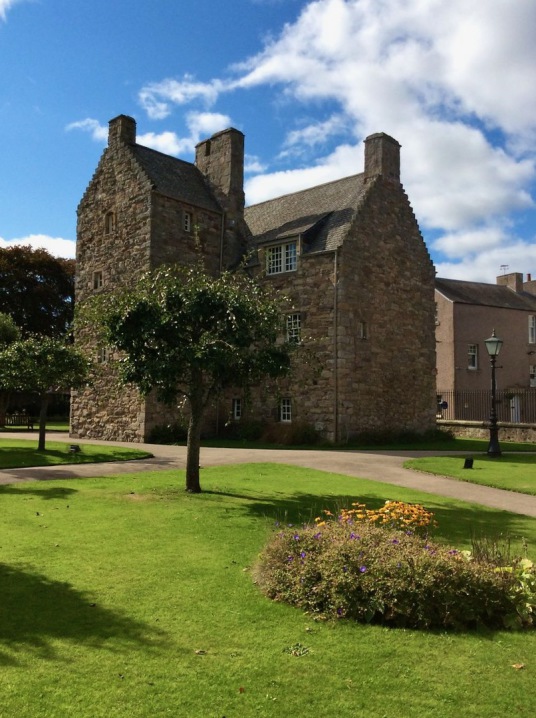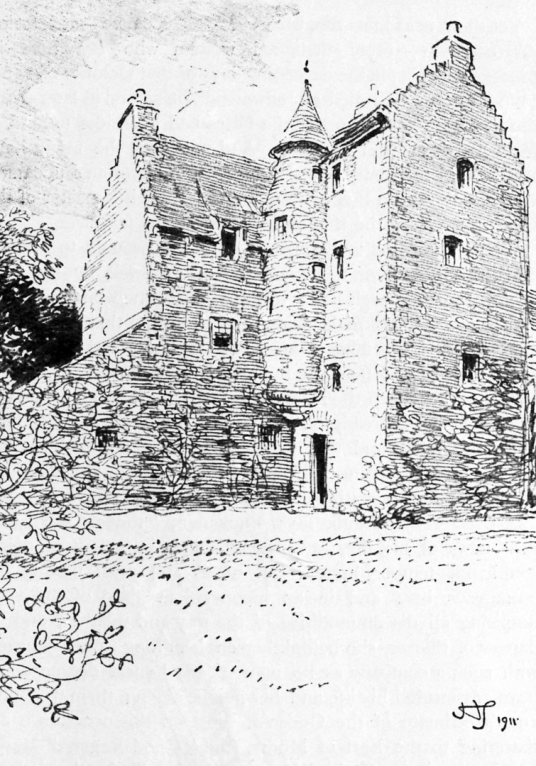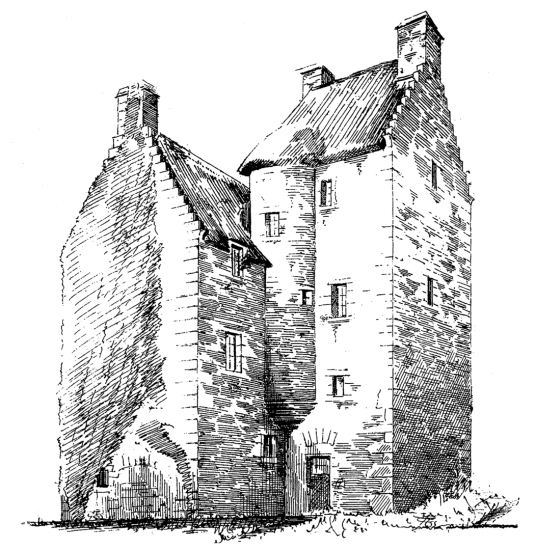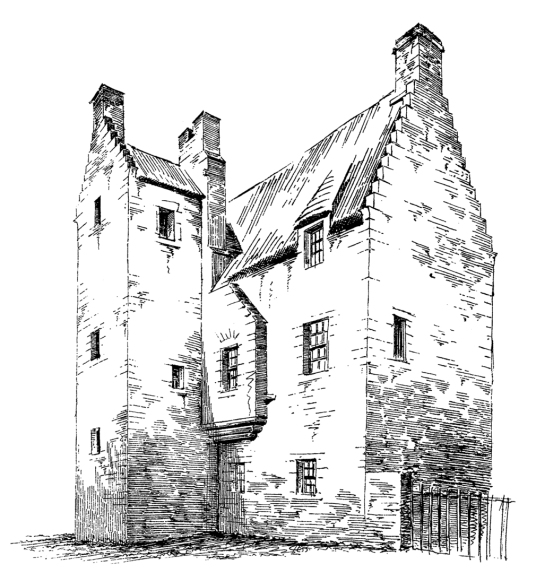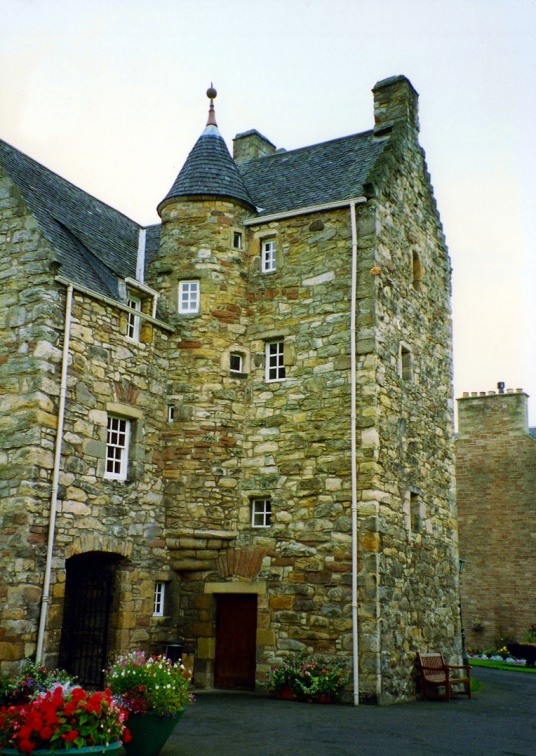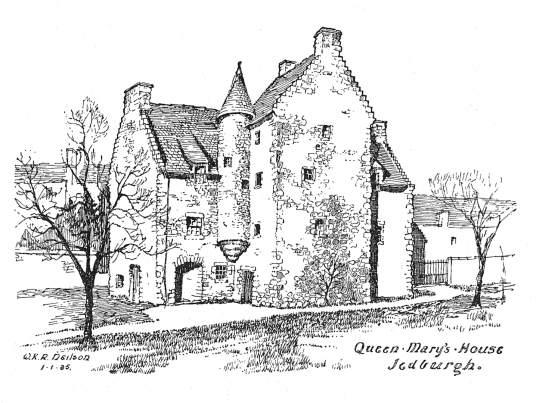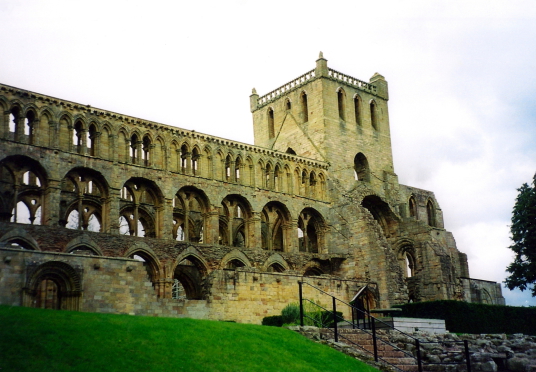Mary Queen of Scots Visitor Centre, Jedburgh
Mary Queen of Scots House or Visitor Centre or Queen Mary's House is a picturesque old tower house, set in a colourful garden in the historic burgh of Jedburgh in the Borders, held by the Scotts and perhaps the Kerrs, and associated with, and now housing a museum about, Mary Queen of Scots.
Borders: In Jedburgh, on Queen Street, on minor roads west of the A68, near Jedburgh Abbey, at Mary Queen of Scots Visitor Centre (Queen Mary's House).
Private NT 651206 OS: 74 TD8 6EN
OPEN: Open Mar-Nov, Mon-Sat 10.00-16.30, Sun 11.00-16.30.
Tel: 01835 863331 Web: www.scotborders.gov.uk
Set in a pretty garden which is now a public park in the scenic and interesting old town of Jedburgh, Queen Mary’s House (now Mary Queen of Scots House or Visitor Centre) is an altered but atmospheric 16th-century T-plan tower house (perhaps a bastle house, more likely a town house).
The building consists of a main block of three storeys and a centrally projecting wing, which rises a storey higher. A stair-turret is corbelled out in one re-entrant angle, and a vaulted pend led to a courtyard, little of which remains. There were presumably tenements or buildings on both sides at one time as there are blocked-up doorways in both gables, and this also explains the pend. The building was thatched at one time, although presumably not when it was first built, and there is a recarved 17th--century heraldic panel above the pend.
The entrance to the house, in the re-entrant angle, leads to a turnpike stair. The basement is vaulted, and the hall is on the first floor and has a large fireplace.
The house belonged to the of Scotts of Ancrum, and perhaps to the Kerrs as the turnpike stair is lefthanded (see Ferniehirst Castle). Mary, Queen of Scots, is believed to have stayed in a chamber on the second floor. She was very ill and lay for many days near to death after her visit to James Hepburn, Earl of Bothwell, at Hermitage Castle in 1566. Above Mary’s chamber is another similar room where the Queen’s Four Marys are thought to have stayed.
The property passed through several families until it was sold to the Olivers of Edgerston in 1928, and they gave the building to Jedburgh and it was opened as museum two years later. The building is still open to the public, and houses a fascinating museum displaying events and exhibits relating to the visit by Mary to Jedburgh, including her death mask.
There are stories that the house is haunted, including the unexplained smell of flowers in the room used by Mary, and mysterious noises including the rustling of a skirt.
Other places of interest in Jedburgh include Jedburgh Abbey and Jedburgh Castle Jail on the site of Jedburgh Castle. The abbey was founded by David I about 1138 as an Augustinian abbey, and much of the impressive Romanesque and early Gothic church and some foundations of the domestic buildings survive.
The Abbey was sacked numerous times by the English, and after an attack in 1544-5 the ruined monastic buildings were exploited as a quarry. The church was used by the parish until 1875 when the crown arch and vaulting of the crossing collapsed, and although unroofed, is in a good state of preservation. The ruins passed into the care of the State in 1913. There is a fine rose window in the west front.


